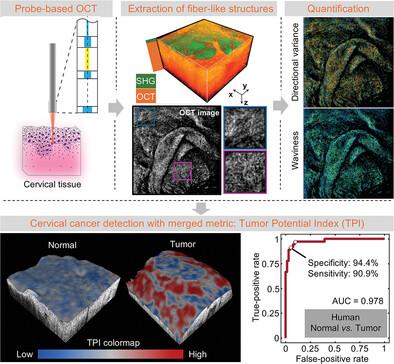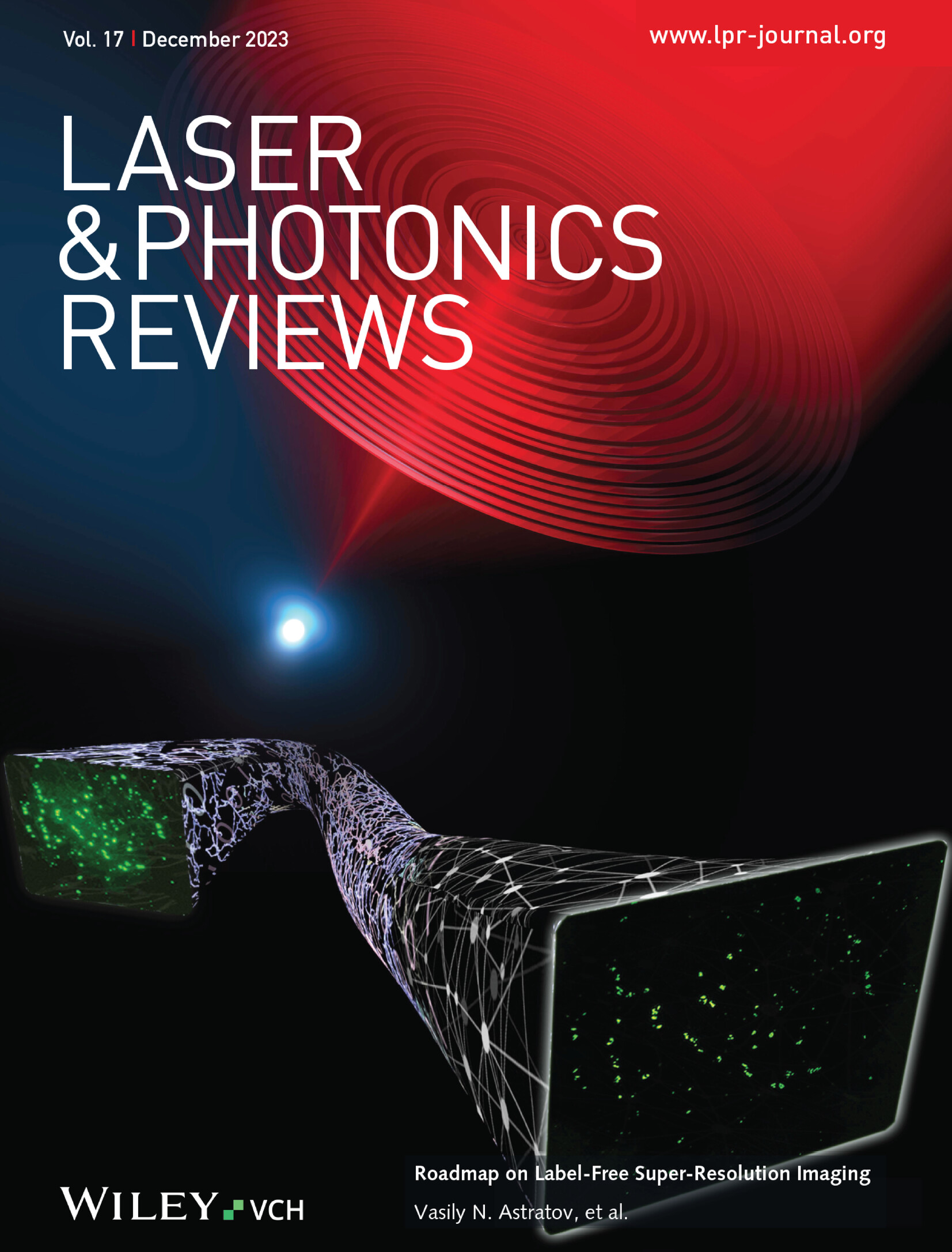Detection of Human Cervical Cancer by Probe-Based Quantitative Optical Coherence Tomography
IF 9.8
1区 物理与天体物理
Q1 OPTICS
引用次数: 0
Abstract
Most cervical cancers develop from squamous cells in the exocervix followed by stromal invasion, which alters the organization and morphology of collagen fibers. Therefore, morpho-structural remodeling of collagen fibers is closely associated with cancer progression. Collagen-based cancer detection requires not only techniques capable of qualified large-depth imaging but also computational sensitivity to extract subtle changes. Here, optical coherence tomography (OCT) is applied to collagen fibers in the exocervix. High-quality imaging into deep stroma is guaranteed by an all-fiber probe designed to have an extended depth of focus through the formation of the quasi-Bessel focusing beam. Collagen fibers provide dominant scattering signals in OCT images, and volume information is utilized to establish an optical biomarker reflecting variation gradient in fiber alignment and crimping. Detection of cervical cancer with a multi-parametric method is then evaluated by ex vivo imaging of human specimens and in vivo imaging of a murine model harboring human cervical cancer. Finally, the tumor potential index (TPI) is proposed by merging multiple metrics. The TPI map provides an intuitive illustration of cancer risk, which may guide clinicians more accurately to the correct location for biopsy.

求助全文
约1分钟内获得全文
求助全文
来源期刊
CiteScore
14.20
自引率
5.50%
发文量
314
审稿时长
2 months
期刊介绍:
Laser & Photonics Reviews is a reputable journal that publishes high-quality Reviews, original Research Articles, and Perspectives in the field of photonics and optics. It covers both theoretical and experimental aspects, including recent groundbreaking research, specific advancements, and innovative applications.
As evidence of its impact and recognition, Laser & Photonics Reviews boasts a remarkable 2022 Impact Factor of 11.0, according to the Journal Citation Reports from Clarivate Analytics (2023). Moreover, it holds impressive rankings in the InCites Journal Citation Reports: in 2021, it was ranked 6th out of 101 in the field of Optics, 15th out of 161 in Applied Physics, and 12th out of 69 in Condensed Matter Physics.
The journal uses the ISSN numbers 1863-8880 for print and 1863-8899 for online publications.

 求助内容:
求助内容: 应助结果提醒方式:
应助结果提醒方式:


